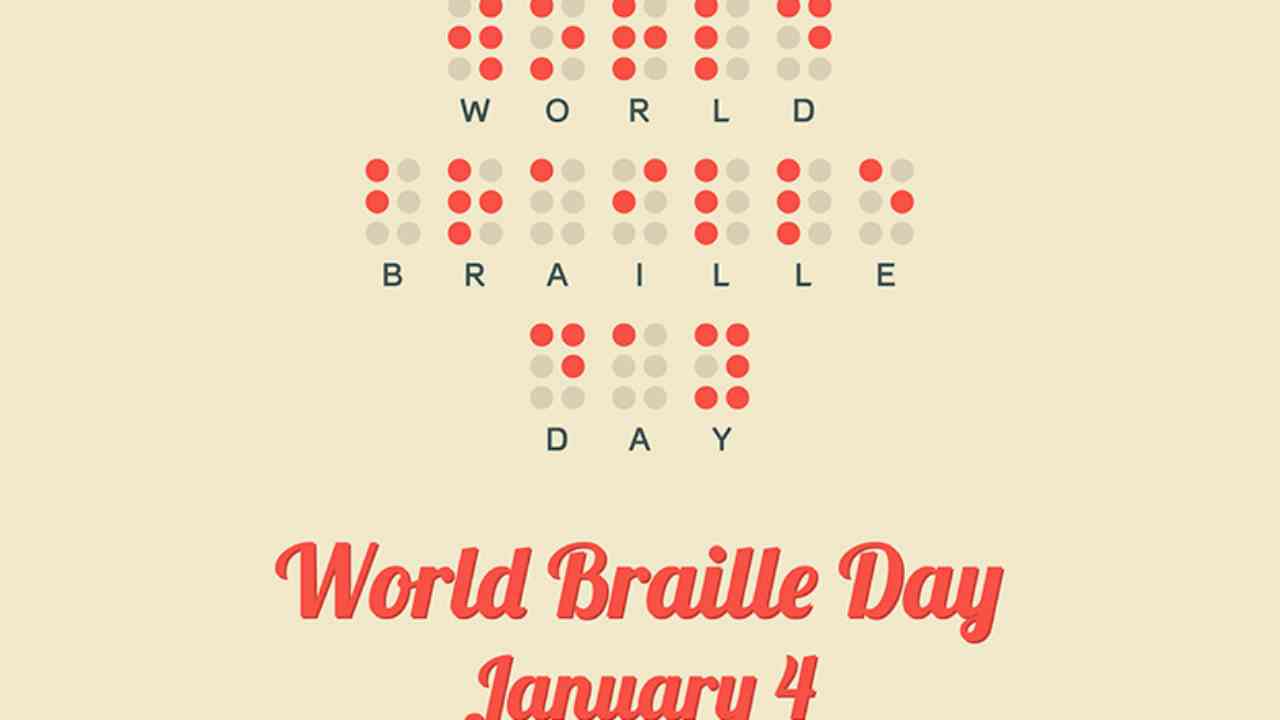Every year, World Braille Day holds a special place in the hearts of people everywhere as it celebrates Louis Braille’s birthday and marks the importance of his invention. This January 4th marks the 206th anniversary of his birth and is therefore, a very special day for those who use braille to communicate, learn and work. World Braille Day provides an opportunity for us to reflect on our own privilege in being able to read without accessibility issues and think about how we can help those who lack basic access to information. It also serves as an important reminder of why the invention of braille was so crucial—it allowed blind people to gain access to education and knowledge like never before. In this blog post, we will look at the history of braille and discuss how we can continue to advocate for its use worldwide.
What is Braille?
Today marks World Braille Day, a day to celebrate Louis Braille and his life-changing invention. Braille is a system of raised dots that can be read with the fingers by people who are blind or have low vision. It is the most widely used form of tactile reading.
Louis Braille was born in France in 1809. When he was just three years old, he injured his eye while playing with a sharp tool in his father’s workshop. The injury left him blind in that eye. A few years later, he lost the sight in his other eye as well.
Braille was sent to a school for the blind when he was 10 years old. The school used a system of raised letters that students were expected to learn by rote memorization. But Louis Braille was not content with this method. He wanted to find a way to read and write that was more efficient than memorization.
In 1824, at the age of 15, Braille came up with his own system of raised dots that could be read by touch. He initially only shared his invention with a few close friends, but eventually word spread and other schools for the blind began using it.
Earth at Perihelion 2023: Date, Significance and effects of Perihelion
History of Braille
The history of Braille is a long and complicated one, full of twists and turns. The system we know today as Braille was actually developed over the course of many years by several different people.
The first person to develop a system of raised dots that could be read by touch was Charles Barbier, a French army captain. Barbier’s system, known as night writing, was designed for soldiers to be able to communicate silently at night without giving away their position. While night writing was clever, it was also very complex and difficult to learn.
It wasn’t until 1821 that a young man named Louis Braille developed a simplified version of Barbier’s system that could be easily learned and used by blind people. Braille’s system quickly caught on, and by the mid-19th century it was being used all over the world.
Today, there are many different variations of Braille, but the basic principles remain the same. And thanks to Louis Braille, blind people have been given a powerful tool for communication and education.
International Mind-Body Wellness Day 2023: Date, Importance and Benefits
How Braille is Used Today
Braille is still used by many people around the world as a way to read and write. It is especially popular among those who are blind or have low vision. In fact, there are estimated to be about 180,000 Braille users in the United States alone!
There are a few different ways that Braille can be used. One is to read Braille books, which are booklets that have raised dots instead of printed words. These dots represent the letters of the alphabet, and they can be read by running one’s fingers over them.
Another way to use Braille is to write it. This can be done with a special device called a Perkins Brailler, which has keys that correspond to the raised dots on a page. By pressing these keys, someone can write out words in Braille.
Finally, there is also something called tactile graphics, which uses raised lines and shapes to represent images. This can be used for things like maps or diagrams. Tactile graphics can be read by running one’s fingers over them just like Braille text.
Reconquest Day 2023: Date, History, What Happened on January 2
Benefits of Learning Braille
There are many benefits to learning Braille, especially for blind or visually impaired individuals. Braille allows these individuals to read and write independently, and can be a vital tool for communication and education.
Braille is a tactile writing system that uses raised dots to represent the letters of the alphabet, numbers, and punctuation marks. It can be read with the fingertips by running them along the lines of text. Braille can also be written using a special braille typewriter or embosser.
Individuals who learn Braille have better employment opportunities and earn higher wages, on average, than those who do not know Braille. They are also more likely to live independently and participate fully in society.
In addition to the many practical benefits, learning Braille can also be a source of enjoyment and pride. It can provide a sense of accomplishment and confidence, as well as a connection to other blind or visually impaired individuals around the world.
Important Days in January 2023: List of National and International days
How to Get Started with Learning Braille
If you’re new to Braille, or are interested in learning it, there are a few things you should know. Here’s a quick guide on how to get started with learning Braille:
1. Choose a method. There are several ways to learn Braille, so you’ll need to decide which method is best for you. You can learn by attending a Braille class, working with a tutor, or using self-study materials.
2. Get familiar with the basics. Before you start learning Braille, it’s important to understand the basics. Start by familiarizing yourself with the Braille alphabet and numbers. Then, practice reading and writing simple words and phrases.
3. Set realistic goals. Learning Braille takes time and effort, so it’s important to set realistic goals. Start by setting small goals that you can realistically achieve within a short period of time. As you become more proficient, you can gradually increase the difficulty of your goals.
4. Practice regularly. Like any skill, practice is essential when learning Braille. Make sure to set aside some time each day to practice reading and writing in Braille. The more you practice, the better you’ll become at using Braille
World Introvert Day 2023: Date, History and Fun Facts
Resources for Learning Braille
When it comes to learning Braille, there are a variety of resources available to help you get started. Here are a few to check out:
The American Foundation for the Blind (AFB) has a variety of resources available on their website, including an introductory guide to Braille, tips on how to get started learning Braille, and a directory of organizations that offer Braille instruction.
The National Federation of the Blind (NFB) also has a number of resources available on their website, including an onlineBraille course, information on how to find a local Braille instructor, and a list of upcoming events related to Braille and blindness.
Perkins School for the Blind offers both residential and distance learning programs in Braille, as well as online resources and support for those who are learning Braille.
If you live in the UK, the Royal National Institute of Blind People (RNIB) also offers a range of services and resources related to Braille, including courses, one-to-one support, and events.
Conclusion
World Braille Day is a celebration of the important contributions made by Louis Braille to literacy and education. It is an opportunity to recognize the impact that his legacy has had on people who are blind or visually impaired, and how it has helped empower them to lead more independent lives. Through increased awareness of World Braille Day and its importance, we can help create an inclusive society in which everyone can access books, technology, and other resources they need in order to pursue their dreams.


















